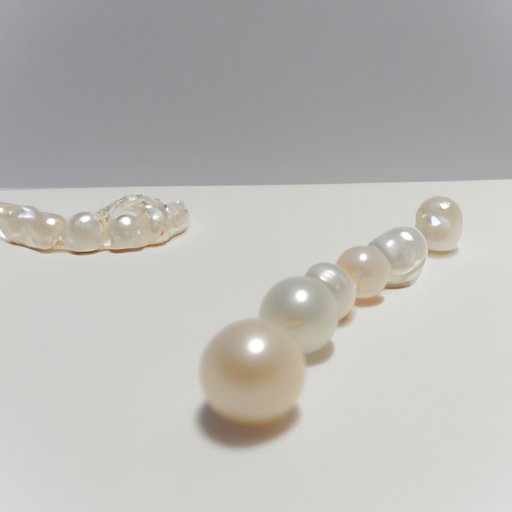Introduction
Minerals are naturally occurring elements that have a specific chemical composition and structure. Examples include quartz, diamond, and calcite. There has been much debate over the years about whether pearls should be classified as minerals or organic substances. This article seeks to explore this debate by looking at the unique characteristics of pearls, their mineral content, and the formation process involved in creating them.
Exploring the Unique Characteristics of Pearls and their Mineral Content
Pearls are made up of a range of different components, including calcium carbonate, conchiolin, and water. The ratio of these components plays a crucial role in determining the quality of the pearl. Calcium carbonate is the main mineral component of pearls, making up around 95% of their dry weight. Conchiolin, an organic substance, makes up the remaining 5%.
The physical properties of pearls also differ from other minerals. They are softer than most minerals, with a hardness of 2.5-4.5 on the Mohs scale. They also have a smooth, waxy surface and an iridescent sheen due to the way light reflects off the nacreous layer. Pearls are also more porous than other minerals, which allows dirt and oils to penetrate the surface.
When compared to other minerals, there are some distinct differences between pearls and minerals. Minerals are typically crystalline in nature, whereas pearls are not. Minerals are formed through geological processes, while pearls are created in living organisms. Lastly, minerals are composed of inorganic elements, whereas pearls contain both organic and inorganic components.

An Overview of the Formation and Composition of Pearls
The formation process of pearls is complex and fascinating. It begins when a foreign object such as a parasite, grain of sand, or piece of shell enters the soft tissue of an oyster or mussel. In order to protect itself, the mollusk will produce layers of nacreous material around the irritant, forming a pearl sac. As the layers build up, they form a pearl.
The role of minerals in the making of pearls is essential. As mentioned earlier, calcium carbonate is the main mineral component of pearls, making up around 95% of their dry weight. The other 5% is made up of conchiolin, an organic substance secreted by the mollusk. This combination of minerals and organic substances creates the unique characteristics of pearls, such as their soft texture and iridescent sheen.

Examining the Debate on Whether Pearls are Minerals or Organic Substances
The debate on whether pearls are minerals or organic substances has been ongoing for centuries. Those who believe pearls should be classified as minerals point to their high calcium carbonate content and argue that they share many of the same characteristics as other minerals. For example, they are hard and durable, and can be polished and faceted like other minerals.
Those who argue against classifying pearls as minerals cite evidence that suggests pearls are organic substances. They point to the fact that pearls are created in living organisms, and contain organic components such as conchiolin. They also argue that pearls are softer and more porous than other minerals, and do not exhibit the same crystalline structure.
Conclusion
This article has explored the debate on whether pearls are minerals or organic substances. It has shown that pearls are made up of a range of components, including calcium carbonate and conchiolin, and have unique physical characteristics such as a soft texture and iridescent sheen. It has also highlighted the role of minerals in the formation of pearls and examined the arguments that support and oppose classifying them as minerals.
Overall, the evidence suggests that pearls are a combination of both minerals and organic substances and should not be classified as either one exclusively. Their unique characteristics and formation process make them a special and fascinating natural phenomenon.
(Note: Is this article not meeting your expectations? Do you have knowledge or insights to share? Unlock new opportunities and expand your reach by joining our authors team. Click Registration to join us and share your expertise with our readers.)
